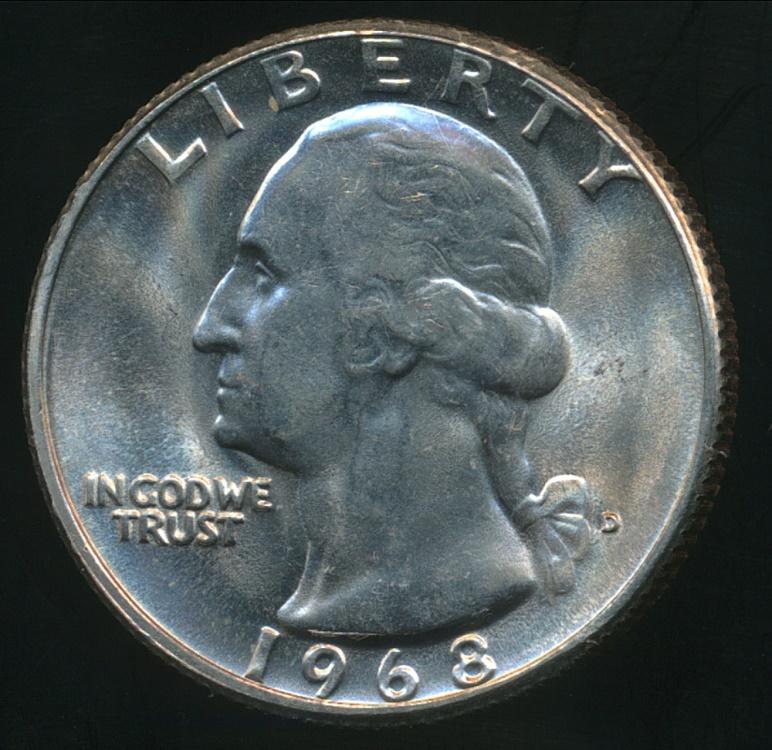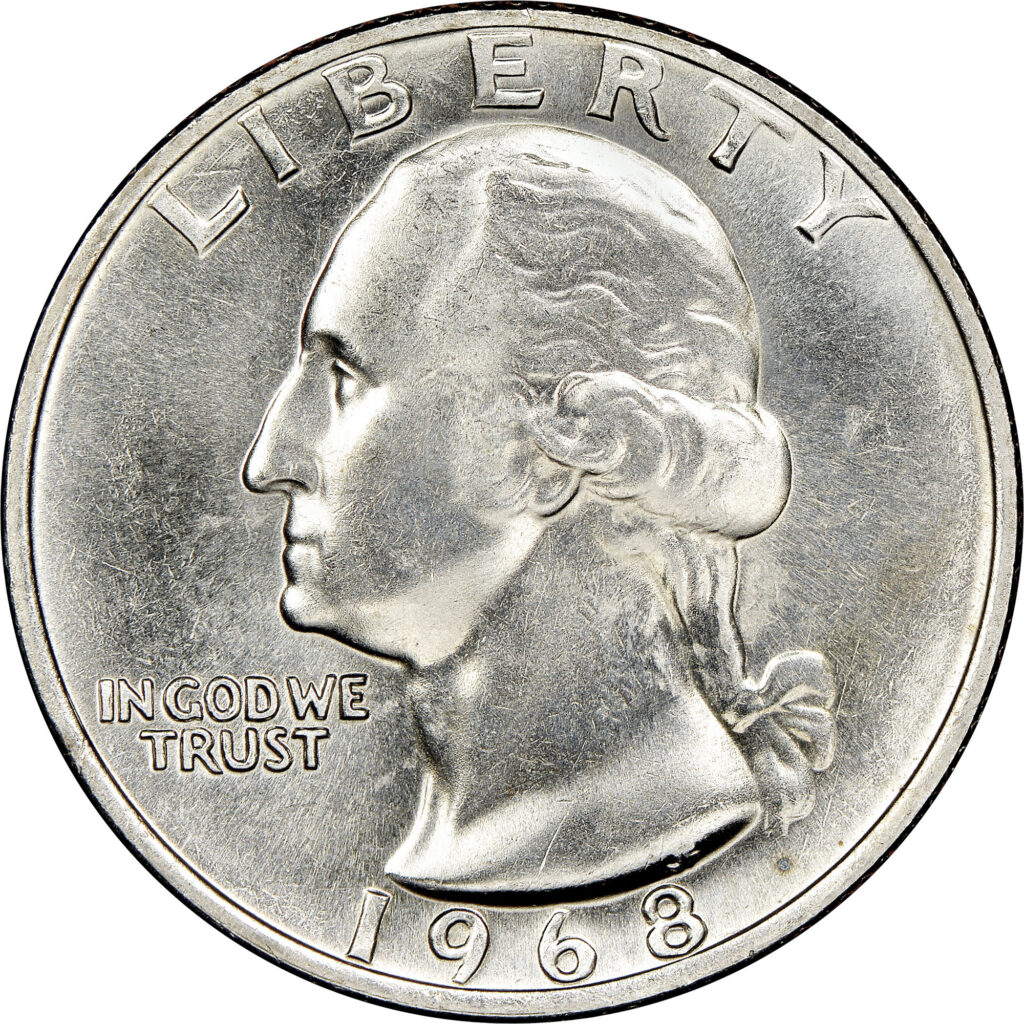The 1968 quarter is more than just a piece of currency; it serves as a fascinating reflection of American history and numismatics. While it might not boast the allure of more famous coins, it has a unique story and significance that make it a worthwhile focus for collectors and enthusiasts alike. This article explores the historical context, physical characteristics, variations, and collecting strategies related to the 1968 quarter.
Historical Context of the 1968 Quarter

The Transition Era in U.S. Coinage
The 1960s were a pivotal decade for the United States, characterized by social upheaval, economic shifts, and transformative changes in various sectors, including coinage. The U.S. Mint was grappling with rising silver prices, which prompted the decision to alter the composition of many coins. By 1965, the U.S. government moved away from using silver in its quarters, dimes, and half dollars, transitioning to a copper-nickel alloy to keep production costs manageable. This shift not only affected the minting process but also signaled a broader change in how Americans viewed their currency.
The Design of the 1968 Quarter
The 1968 quarter features the enduring design created by John Flanagan, which depicts George Washington on the obverse (front) side. Washington’s profile is surrounded by the words “LIBERTY,” “IN GOD WE TRUST,” and the year of minting. On the reverse side, a majestic eagle is depicted, embodying strength and freedom—an apt representation of the nation itself. This design was initially introduced in 1932 to commemorate Washington’s 200th birthday and has remained largely unchanged, except for some modifications in subsequent years.
Characteristics of the 1968 Quarter

Composition and Minting
The 1968 quarter is made from a copper-nickel alloy, consisting of 91.67% copper and 8.33% nickel. This composition was a notable change from the earlier silver quarters that contained 90% silver. The weight of the quarter is approximately 6.25 grams, and it has a diameter of 24.26 mm. These specifications are consistent with quarters minted from 1965 onward.
Mint Marks
Mint marks play a critical role in determining the origin of a coin, and the 1968 quarter was minted at multiple facilities, primarily in Philadelphia and Denver:
- P: Philadelphia Mint (Note: No mint mark was used for quarters struck in Philadelphia until 1980)
- D: Denver Mint
- S: San Francisco Mint (primarily for proof coins)
The mint marks can significantly affect a coin’s desirability and value. For collectors, understanding where a coin was minted is key to building a comprehensive collection.

Varieties and Rarity
Standard Circulation Coins
Most 1968 quarters found in circulation are not particularly rare. The Philadelphia and Denver mints produced millions of these coins, which makes them widely available. However, the value of these coins can vary based on their condition. Common circulated examples may be worth only their face value, while coins in uncirculated condition can attract higher prices.
Proof Coins
The San Francisco Mint struck a limited number of proof quarters in 1968, which are highly sought after by collectors. Proof coins are created using a specialized minting process that results in a shiny, mirror-like finish. These coins are typically made in smaller quantities, making them more desirable. The 1968-S proof quarter is especially valuable and can command higher prices depending on its condition and market demand.
Special Varieties
Collectors often look for specific varieties or unique features in coins. While the 1968 quarter doesn’t have well-known major varieties, subtle differences in strike quality or minor errors can be of interest to keen-eyed collectors. Such characteristics may include unusual die markers or inconsistencies in the design, which can add intrigue and value to specific coins.
Collecting the 1968 Quarter

Assessing Condition
Condition is a paramount factor when determining the value of a 1968 quarter. Coins are graded using a scale that ranges from Poor (P) to Perfect Mint State (MS-70). Here are some key aspects to consider when assessing a coin’s condition:
- Surface Quality: Look for any scratches, dings, or signs of wear that may diminish a coin’s appeal.
- Luster: Coins that retain a shiny, reflective surface are more desirable. Dullness often indicates wear from circulation.
- Strike Quality: A well-defined strike means that the coin’s design is clear and sharp, making it more valuable.
Storage and Preservation
Proper storage is essential for maintaining the condition of your coins. Here are some best practices for preserving your 1968 quarters:
- Use Protective Holders: Store coins in acid-free holders or coin flips to prevent exposure to dust, moisture, and physical damage.
- Avoid Handling: When examining your coins, use cotton gloves to prevent fingerprints and oils from transferring to the surface.
- Climate Control: Keep your coins in a stable environment, away from extreme temperatures and humidity, which can cause deterioration.
Market Value and Pricing
While the 1968 quarter is not generally considered a high-value coin, several factors can influence its market price:
- Rarity: Proof coins, particularly those in pristine condition, can command higher prices in the collector market.
- Demand: The interest of collectors can fluctuate over time, impacting the market value of coins.
- Condition: Coins in uncirculated condition or with high grades can significantly increase in value, especially among avid collectors.
As of recent evaluations, standard circulation coins may be worth only their face value, while proof coins in excellent condition can range from $5 to $30 or more.
The Cultural Significance of the 1968 Quarter

A Symbol of Change
The 1968 quarter is more than just a coin; it symbolizes a pivotal moment in U.S. history. The transition from silver to copper-nickel coins reflects the broader economic adjustments the nation faced during a time of inflation and change. The 1968 quarter is thus emblematic of the economic realities of its time.
Educational Tool
The 1968 quarter serves as an excellent educational resource for teachers and numismatists. It provides an opportunity to discuss U.S. history, economics, and the artistry involved in coin design. Collecting coins can inspire students to engage with topics like value, currency, and the significance of historical artifacts.
Cultural References
The 1968 quarter, like many coins, appears in various cultural contexts, from literature to film. Coins often represent luck or change, making them a frequent motif in storytelling. The 1968 quarter may not have specific cultural references but can evoke memories of everyday transactions and experiences for many Americans.
Tips for Successful Collecting
Join a Community
Engaging with fellow collectors can enhance your experience and knowledge. Consider joining local coin clubs, online forums, or attending coin shows. Networking with other enthusiasts can provide valuable insights into the market and help you learn more about the hobby.
Research and Resources
Take the time to educate yourself about coin collecting. Utilize resources such as books, online guides, and reputable coin grading services. Understanding the market, grading scales, and trends will help you make informed decisions when purchasing or selling coins.
Focus on Quality
While it may be tempting to accumulate a large quantity of coins, focusing on quality rather than quantity can lead to a more satisfying collection. Seek out coins in the best possible condition, as these will hold their value better over time and provide a more aesthetically pleasing display.
Conclusion
The 1968 quarter may not be the most glamorous coin in American history, but it offers a rich tapestry of history, design, and collecting opportunities. From its role in the transition of U.S. coinage to its status as a collectible item, the 1968 quarter provides insight into both the economic realities of its time and the art of coin design. Whether you are a novice collector or a seasoned numismatist, exploring the 1968 quarter can deepen your appreciation for the world of coins and the stories they tell. Happy collecting!



